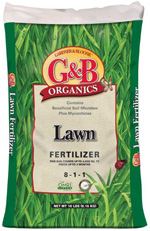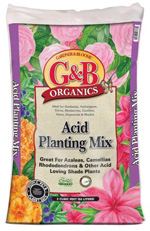|

    
 
|
 |
FEATURED QUOTE : "Plants give us oxygen for the lungs and for the soul." |
 Hurry, sale ends this Sunday - April 2. |
Spring and Summer HoursMonday through Friday: 7:30 - 5:30 |

|
Tomatoes are the favorite vegetable for home growing. Over the past years, commercial growers have produced tomato varieties that valued shelf-life and unblemished prettiness over taste--and the result has been an almost tasteless tomato at your local stores. You can put taste back on top of the list by growing your own. Tips on Choosing Your Tomato Plants:
Planting tips:
Grow your own tomatoes! Your taste buds will thank you! |
 |
|
Planting There's still time to plant roses. They are full of buds and blooms right now--and they are simply gorgeous. If you are a beneficial insect lover, flat-topped flowers like Shasta daisies, scabiosa, strawflowers, and yarrow are perfect additions to your garden for feeding them. Beneficial insects such as the almost microscopic parasitic wasps, ladybugs, etc. keep other insect pests away from your vegetable gardens by eating aphids, scale, and other annoying intruders. You can use beautiful flowers to tempt these garden friends into your garden. Try putting some of these flowers near to your rose garden for aphid control! Time to plant dahlias, begonias--and get in the gladiolus bulbs. Add some bone meal to the planting hole. The narcissus and daffodils are blooming, as well as other spring blooming bulbs. As soon as the blooms are spent, you can deadhead--but don't remove the foliage! T he bulb needs that green foliage to add nutrients back to the bulb for next year's flowers. Hide the clippers for a little while longer. Try an old-fashioned technique of braiding the leaves. If you must cut, leave at least half of the leaf length for the bulb. It will thank you with next year's bloom! It's time to start warm season crops. Coastal areas can continue planting cool season crops like the leaf lettuces, radishes, and spinach for a while. Inland zones (not the high desert, though) can start the warm season vegetables such as beans, corn, squashes, cucumber, eggplant, tomatoes and peppers. We have them all and more. Maintenance You may see some chlorosis on your acid-loving plants like the azalea or camellia, and possibly on your citrus. This yellowing of the leaves between the veins is a sign of iron deficiency for the plant. Feed with a good iron supplement. Especially near the coast, this is the time we begin to see powdery mildew on our rose foliage (and other plants too). There are several different foliar fungicidal sprays to that can help. Aphids will be back. Remember that you can first wash them off with water. Really, it does help. For more severe infestations, ask us to recommend something suitable for your particular plants. Continue to replenish your mulch and maintain a 2-4" blanket over your soil. |

|
Let's take a trip to an area most consider to be the driest desert in the world--the Atacama Desert in northern Chile. Picture a landscape comprised of salt lakes, sand and lava flows. While not extremely hot (highs in the warm season are around 75 degrees), its lack of water is a killer. Evidence suggests that there was not any significant rainfall in this region from 1570 to 1971. It is 50 times drier than Death Valley in California. The landscape is so desolate that it has been compared to that of Mars. Does this sound like a place that can support plant life? You probably see where we're going with this--with all these obstacles, some members of the Cactus family have managed to survive even here! All cacti are native to the Americas, from Canada (not all cacti like hot weather) to Argentina. Europeans first encountered them when they arrived in the New World, late in the 15th century. By the early 1800's, enthusiasts had large collections of cacti and other succulents. Rare plants were sought after and sold for extremely high prices. Cacti suppliers employed collectors to bring back plants from the wild in addition to growing their own specimens. This cactus frenzy lasted until the late 1800's, when the affections of plant fanciers turned to collecting orchids. The Cactus family is a large one. It contains small varieties that grow to only a few inches tall up to gargantuan types that reach fifty feet tall. While most types are extremely drought-tolerant, there are a few that prefer to grow in dripping, tropical rain forests in partial shade. These moisture-loving cacti (Epiphyllum, Rhipsalidopsis and Schlumbergera) grow on trees or rocks and derive their moisture and nutrients primarily from the air and rain. How have cacti been able to adapt so well to adverse conditions? Over time, their stems have evolved into cylinders, pads or joints that store water in times of drought. Their thick, tough skin reduces evaporation. Why do most cacti have so many spines? These are actually modified leaves that protect the plant against browsing animals and help prevent water loss by reducing air flow close to the plant and providing some shade. The properties of the spines (number, color, size, shape and hardness) are often used as a means of identifying one cactus from another. Cactus flowers are usually very showy and come in a wide range of colors. The flowers are produced from areoles, which are around the areas where the spines emerge from the plant. Many cacti also have delicious, edible fruit--and the flesh of a few other types (especially Opuntia) is also used for food. Most cacti are extremely easy to care for. Most types require full sun and well-drained soil. Newly planted cacti should be watered very little, as their roots are subject to rot before they begin actively growing. In about six weeks, when the new roots become active, water thoroughly, then let the soil dry completely before watering again. Reduce (or even discontinue) watering in the fall to allow them to enter their dormant stage. To promote growth and flowers, fertilize monthly in spring and summer; no fertilizer should be given in the fall and winter. Smaller types of cacti are suitable for growing in containers or as additions to rock gardens; it is in this type of setting that their interesting forms and brightly-colored flowers can be best appreciated. Larger types make striking additions to the garden--some of these get very large, however, so make sure to take their eventual size into consideration when placing them in the garden. With their wide array of colors (plant as well as flower), shapes and textures, a garden of cacti can be a dramatic (and easy-to-care-for) focal point to the garden. Come by and let us help you get started on yours! |
 |
|
When most people think of annuals they think about upright varieties for borders and containers. But when planning your annual garden, think about more than just upright plants. There are a number of wonderful trailing varieties that are perfect for providing a splash of color between shrubs, on a hillside or cascading over a rock wall or trailing from a hanging basket. For a hillside, it's hard to beat trailing lantana, with its showy purple and white blooms. A happy plant can reach 3-4 ft across in diameter. If you are looking for a slightly flatter foliage that hugs the ground, consider the mauve-flowering scaevola. It's easy to perk up your landscape by planting patches of million bells (calibrachoa) in spaces between larger shrubs. This colorful annual comes in a variety of bright hot colors including red, yellow, apricot, white, pink, fuchsia, blue, and violet. Another alternative would be verbena, which is available in many colors, flower sizes and flat or mounding foliage. These plants also look great flowing over rock walls or pool edges. For large splashes of color in the landscape, use petunias or ivy geranium. Both grow incredibly fast and come in every color under the sun. You can dress up the edges of a boring-looking vegetable garden with nasturtium, whose orange, red and yellow flowers are also edible. All of the above mentioned plants perform well in hanging baskets but there are a few plants that make great partners with them and are particularly suited for container planting. To add some texture and unique foliage color to your hanging baskets consider using silver dichondra, licorice plant (helichrysum) or parrot's beak (Lotus maculatus). All have silvery grey foliage that provides a great contrast to other plants. While most plants in hanging baskets perform better with a little shade from the afternoon sun, one annual is particularly suited for slightly shadier confines. Use trailing lobelia, which comes in many shades of blue, rose and white. Its cheerful little blossoms are perfect for any container. |
 |
|
What does "double digging" the soil mean? Answer: Double digging is an old garden technique of amending the soil in a flower or vegetable garden that is still as effective today as it was back in medieval Europe. But be forewarned: double digging is a lot of work. In fact, just thinking about it makes us break out in a sweat. The term comes from "double the depth" of a normal spade or shovel blade--hence double-digging. You will also be adding one third of the depth of your spade or shovel in soil amendment to the entire garden you are digging in. To get started, dig out the topsoil to the depth of your spade or shovel in a trench one spade wide along one end of your bed and set aside in a wheelbarrow or on a tarp. Turn, break and aerate the next spade depth and width. Work in one third by volume of soil amendment. Blend together with turned-over soil and fill in the first trench. Now repeat the process with another trench. Blend that soil with more soil amendment, and transfer to the previous trench. At the end of the bed, place the topsoil from the wheelbarrow or tarp over the last section, add amendment, and mix it in. Make sure to remove any rocks or old pieces of roots as you fill in each trench. Now--if you haven't collapsed yet--go ahead and plant your flowers. Better yet, plant a new crop of veggies. You'll need the vitamins to help you recover from the exhaustion! More seriously--if you have poor soil, double-digging is one of the most effective ways to improve the soil to a good depth, one that will allow your plant roots plenty of room to grow. Rototilling and such can help too but it doesn't improve much but the top layer of soil. Double-digging may be labor-intensive, but it works. |

 click here for a printer friendly version of this page
click here for a printer friendly version of this page
 |
Written content © Garden Partners LLC, or respective authors. All Rights Reserved. Privacy Policy. All written content contained in this site is protected by United States copyright law and may not be reproduced, distributed, transmitted, displayed, published, or broadcast without prior written permission of Garden Partners, LLC. You may not alter or remove any trademark, copyright or other notice from copies of the content. |

 W
W

